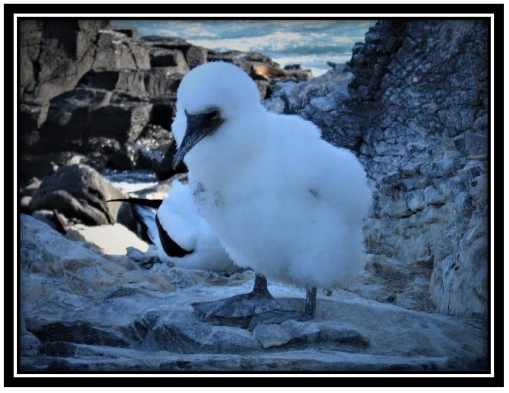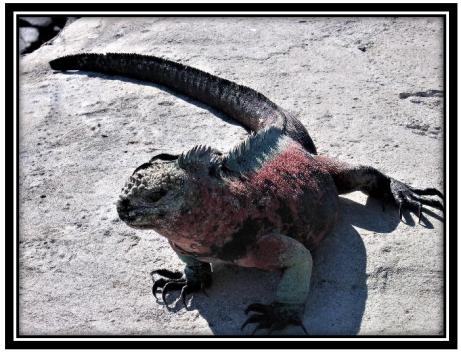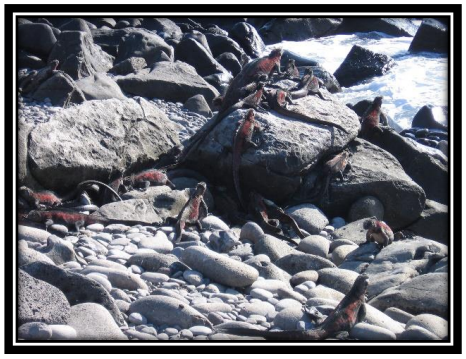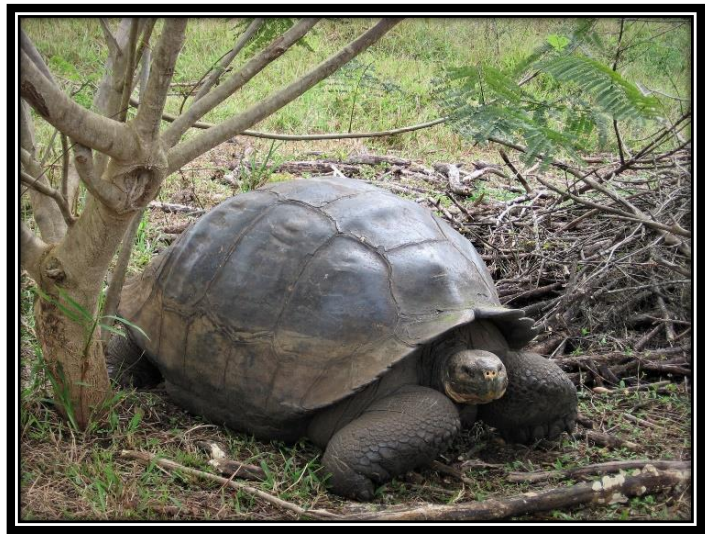MORE LOVE IN THE GALAPAGOS
We saw the Blue-Footed Boobie doing its adorable, goofy, ploppy mating dance. We saw the Albatross doing its surprisingly graceful and sedate mating dance.


We saw the Frigate bird puffing out its red breast to the point that I wondered if it would burst from the pressure. We saw so many puffing frigate birds on one hillside that it looked like a giant Christmas tree.




We saw a young Albatross spreading its amazing wings. The Albatross has one of the largest wingspans of any living bird, and the largest species of them can have a wingspan of 11-12 feet.

We saw those amazing little fireballs, the vermillion flycatchers, darting around. We passed within three feet of hundreds of nesting birds that paid us no attention whatever.





We saw those green and red iguanas that are so ugly they are gorgeous.




We saw the bull sea lions throwing their monstrous weight around as they fought in the shallows for control of a harem. And we saw two 500+ pound Galapagos Tortoises mating in a copse of brush.

Now THAT was interesting even if rather boring.
Our guide informed us that the male basically “ran the female to ground” in the thicket, where she was caught, and he could proceed with his V-E-R-Y slow lovemaking.
Considering that the tortoises walk about three steps and then stop to rest, I struggled a bit to visualize how the male actually “ran the female to ground.”
But somehow he did, and then he managed to rear up and make one slow thrust about every ten seconds, with a loud groaning grunt.
Interestingly, this mating ritual is the only time the giant tortoises make a vocalization other than a hiss.
The mating can take hours, but typically is 15 to 20 minutes, and it is anything but private. Everyone in a one to two-mile radius is aware of the mating because while the male is thrusting, he makes VERY loud grunting and groaning noises.
Most interestingly, once inseminated, the female Galapagos tortoise can store the male sperm in her body for up to seven years.
And maybe these giants have equally impressive memories? I found a wonderful tee shirt in a souvenir shop showing a female giant tortoise berating the male for being unfaithful to her 150 years ago.
These giants were absolutely fascinating to watch, slow or not. I was also thinking that if I weighed 500 pounds and carried around 5 gallons of water all the time, I might move a little slow too.








Some of you already know, I am sure, that the reason tortoises and turtles move so slowly is they have a slow metabolism and must conserve their energy and regulate their body temperature.
The giant tortoises eat twice a week and poop five days after eating. Their poop is absolutely fascinating, dear readers, a sausage-like cylinder about 9-10 inches long and maybe 3-4 inches in circumference. If you find one that has dried out, it looks like a lacy Christmas-tree ornament because undigested grass forms an outer shell and the interior is empty. Quite beautiful! Who knew?
The Galapagos Islands are the second largest marine preserve in the world, the Great Barrier Reef in Australia being the first.
Ecuador claimed the Galapagos archipelago in 1835, a few years after Simon Bolivar died and his fledgling dream of a united South America called Gran Columbia went kaput.
Our guide told us that the Galapagos got its name from the Spaniards, who saw the giant tortoises and said “Look at the Galapagos” (saddles). The guide said that galapagos is an old Spanish word for saddle.
Myrtle snorted quietly and whispered to me, “It is NOT – our dude is really behind the times. Linguists today know that ‘galapagos’ always meant tortoises.”
At any rate, these famous and endangered creatures reach maturity at age 45 and live to be about 200.
There are several giant tortoise breeds, and at the time we were there, Lonesome George on the Island of Pinto was believed to be the last of his breed and scientists were trying to find a Georgina for him in a zoo someplace. Today there is some interesting research being done in genetic engineering on existing hybrid tortoises to bring back extinct breeds.

Something I found really interesting is that the Ani Bird, along with some species of finch and mockingbird, provide an
essential hygiene service for these tortoises.
A small group of birds gather on the ground in front of a tortoise, hop around to get his or her attention, and if successful, the tortoise will hiss and blow a bit and raise itself up and fully stretch out its neck, exposing the skin of the neck, legs, and cloacal opening.
Now THAT is a great word – cloacal opening! When our guide first used it, I was a bit jealous, thinking how unfair it was that these giant tortoises get to call that part of themselves a “cloacal opening”, so elegant, when we humans are stuck with the rather rude word anus.
It is not that simple, as I learned. For some animals like reptiles, birds, amphibians and a few mammals, the cloaca is the only posterior orifice they have and the one opening serves for urinary, excretory, and reproductive functions.
When birds mate, for example, they press their cloacae together for a few seconds to transfer the sperm. This is called a “cloacal kiss.” How pretty is THAT!
For most reptiles, including the giant tortoise, the male cloaca folds out to form a penis, which the male then needs to insert into the female for insemination, hence the need to thrust and grunt.
Now if this is just way too much information for you, dear reader, I totally understand. Please just delete that last little bit.
Anyway, back to the giant tortoise. In short order the Ani birds begin feasting on parasites that have taken up residence on the tortoise. This mutually beneficial grooming activity usually works well for both sides, the birds getting a free meal and the tortoises getting rid of parasites.
Occasionally, however, if a bird wanders beneath a tortoise as the tortoise is withdrawing its arms and legs and collapsing, the bird is caught beneath the tortoise and finds itself quite thoroughly squashed. Then the tortoise steps back and proceeds to eat the bird. I guess that falls into the category of “No good deed goes unpunished.”
In pirate times it was believed that the eyes of the giant tortoise would put a curse on you if you did not take care of nature.
People who like to promote this idea usually then trot out a story or two to illustrate what happens to those who do not respect nature, like the tourist who got lost and was found five months later mummified under a tree, or the tourist that disappeared years ago and still has not been found.
Our guide wondered if that tourist fell into a lava tube. Right then I told Myrtle we were NOT going to take that little exploratory walk she wanted to take through the jungle.
To be continued…

